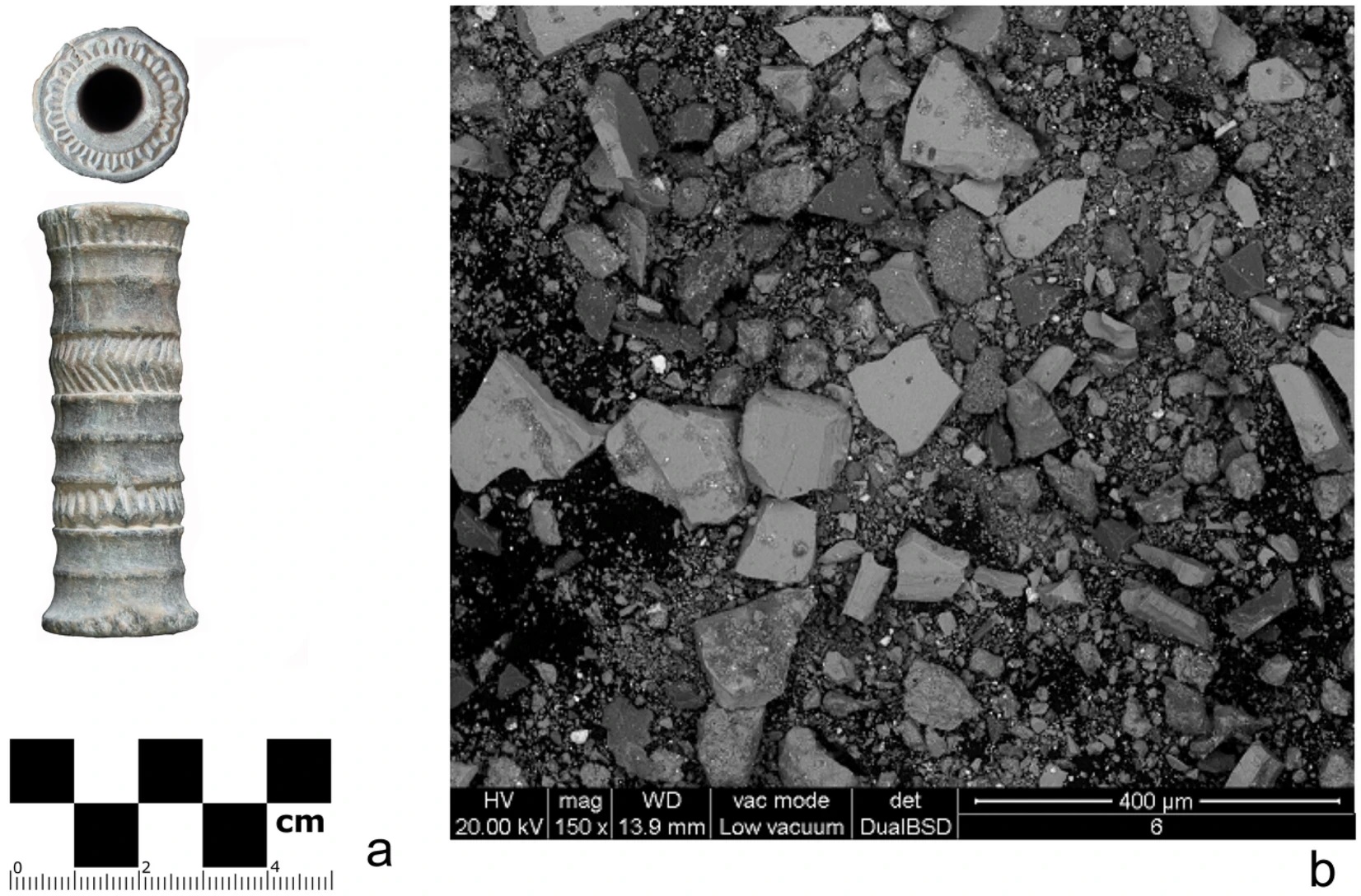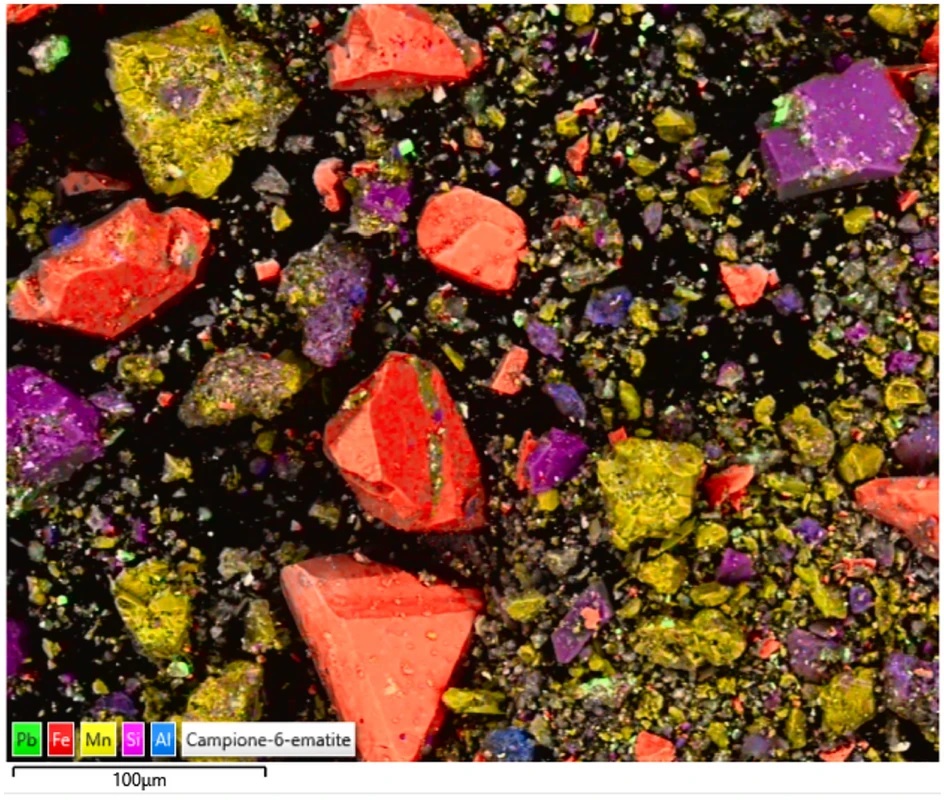A 4,000-year-old tube of lipstick bears a "striking resemblance" to its modern counterparts
24.02.2024 | 23:19 |Although the ancient Egyptians may have made eyeliner famous, a stunningly detailed archaeological find shows that the ancient Iranians may have been the holders of the first lipstick patents.
Recently, in a study published in the journal Scientific Reports, It is described in detail that a bottle of dark red powder found during excavations of the Iranian civilization of the pre-Achaemenid period, dating back to the Bronze Age, apparently contains all the characteristics of modern makeup. The photo above shows the mineral composition of the lipstick under a microscope and the tube itself.
Using various imaging techniques, including liquid chromatography, mass spectroscopy, scanning electron microscopy and X-ray diffraction, a team of scientists from the universities of Padua and Tehran determined the mineral composition of a substance found inside a vial made of carved greenish slate called chlorite.
Consisting of hematite (which gives a dark red color), manganite, brownite, galena, anglesite and vegetable waxes, the mixture "bears a striking resemblance to the recipes of modern lipsticks," the authors write.

Their research made it possible to obtain the first-ever radiocarbon date of a Bronze Age cosmetic in the ancient Near East and attributed its creation to about 1936 and 1687 BC.
Most of the cosmetics obtained from ancient civilizations are white powders that were used as a base or eye shadow, as well as the iconic eyeliners of the Egyptians and Persians, made of black antimony or, unfortunately for their neurological health, lead.
"When did people start painting their lips red? What pigments were first used to color human lips? At the same time, were people aware of the potential danger of direct ingestion of lead through the mouth?" the authors discuss.
"Although ancient Iranian foundation, eye shadow and blush were mostly made from lead carbonates, the newly discovered cosmetics contain minimal amounts of lead minerals," they continue.
"The contrast between the abundant use of lead-based substances, obviously intended for the skin, and even more so in this red paint, may indicate that cosmetics manufacturers were aware of the potential danger of direct oral administration of lead."

They believe that substances of plant origin could have been added to give a pleasant aroma.
One of the hypotheses put forward by the researchers, further reinforcing the idea that lipstick shades like those sold today in prepackaged tubes or sets from Mac or L'Oreal appeared in ancient Iran, is that the chlorite bottle was intricately carved unlike any other previously identified container for cosmetics of that period.
This, they suggest, meant that this particular product could be packaged and sold individually, that high-society buyers knew that the vials carved into the shape of a reed stem were made by a specific craftsman.
Regardless of whether this idea of ancient branding is true, this is an exciting window into the history of how people's ideas about beauty and fashion were formed, starting with the oldest urban civilizations on Earth.
ORIENT news











